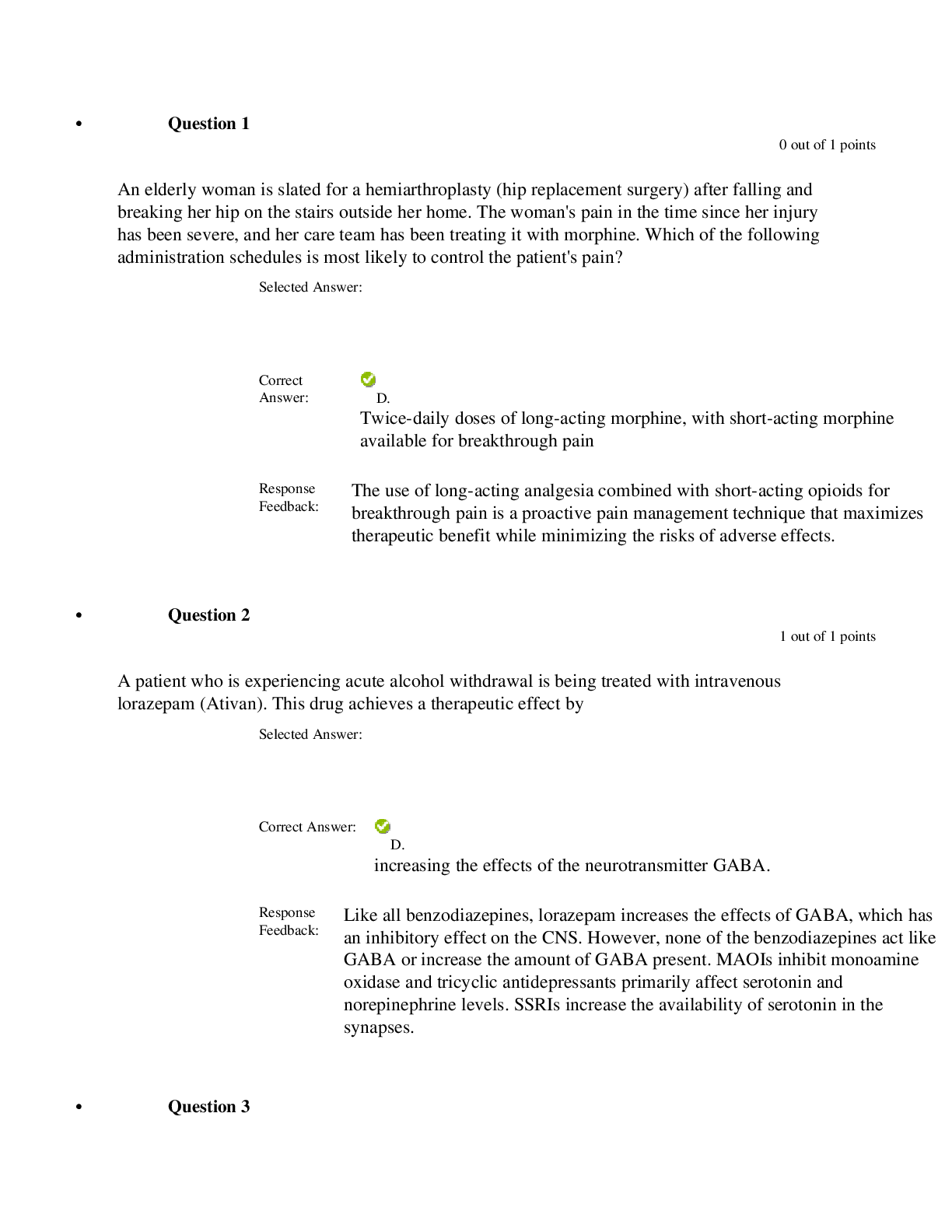*NURSING > QUESTIONS & ANSWERS > NR283 Patho Quiz Week 5 complete solved solution graded A 2020 docs (All)
NR283 Patho Quiz Week 5 complete solved solution graded A 2020 docs
Document Content and Description Below
NR283 Patho Quiz Week 5 complete solved solution graded A 2020 docs • Question 1 1 out of 1 points A newborn baby is severely cyanotic. An echocardiogram reveals transposition of the great ... arteries. A nurse assesses for which of the following, as it usually occurs with this defect? • Question 2 1 out of 1 points A 1-month-old infant was diagnosed with truncus arteriosus (TA) with a ventricular septal defect. Which of the following would the nurse also expect? • Question 3 1 out of 1 points A newborn is diagnosed with congenital heart disease. Which of the following intrauterine factors should the nurse focus on during the history that could have caused this disorder? • Question 4 1 out of 1 points A 72-year-old female has a history of right heart failure caused by a right ventricular myocardial infarction. Which of the following symptoms are specifically related to her right heart failure? • Question 5 1 out of 1 points A 50-year-old male was admitted to the intensive care unit with a diagnosis of acute myocardial infarction (MI). He is being treated for shock. His cardiopulmonary symptoms include low blood pressure, tachycardia, and tachypnea. His skin is pale and cool. The primary cause of his shock is most likely: • Question 6 1 out of 1 points When a patient asks the nurse what is the most common cause of myocardial ischemia, which statement is the correct response? The most common cause of myocardial ischemia is: • Question 7 1 out of 1 points A newborn is suspected of having coarctation of the aorta. Which of the following assessments would aid in diagnosis? • Question 8 1 out of 1 points A 56-year-old male presents to his primary care provider for a checkup. Physical exam reveals edema, hepatomegaly, and muffled heart sounds. Which of the following is of greatest concern to the nurse? • Question 9 1 out of 1 points A nurse is explaining the function of the heart. Which is a correct response by the nurse? A function of the pericardium is to: • Question 10 1 out of 1 points A 30-year-old female presents to her primary care provider with fever, cardiac murmur, and petechial skin lesions. She is diagnosed with infective endocarditis. When the patient wants to know what caused the disease, what is the nurse’s best response? The most likely cause of the disease is: • Question 11 1 out of 1 points A 60-year-old female had a myocardial infarction. She was brought to the hospital 30 minutes later. She survived, but now the nurse is providing care for impaired ventricular function because: • Question 12 1 out of 1 points A 22-year-old pregnant female presents for a fetal echocardiogram. Tests reveal small left atrium and mitral valve and an absent left ventricle and aortic valve. The diagnosis is hypoplastic left heart syndrome (HLHS). The nurse will anticipate that the treatment for this defect is: • Question 13 1 out of 1 points A 75-year-old obese female presents to her primary care provider reporting edema in the lower extremities. Physical exam reveals that she has varicose veins. Upon performing the history, which of the following is a possible cause for the varicose veins? • Question 14 1 out of 1 points A 51-year-old male presents with recurrent chest pain on exertion. He is diagnosed with angina pectoris. When he asks what causes the pain, how should the nurse respond? The pain occurs when: • Question 15 1 out of 1 points A 52-year-old female is admitted to the cardiac unit with a diagnosis of pericarditis. She asks the nurse to explain where the infection is. In providing an accurate description, the nurse states that the pericardium is: • Question 16 1 out of 1 points A nurse is teaching a patient about anaphylactic shock. Which information should the nurse include? The onset of anaphylactic shock is usually: • Question 17 1 out of 1 points A nurse recalls the most common cardiac valve disease in the United States, which tends to be most prevalent in young women, is: • Question 18 0 out of 1 points Which is the most common type of congenital heart defect the nurse should assess for in infants? • Question 19 1 out of 1 points A 27-year-old male is admitted to a neurologic unit with a complete C-5 spinal cord transection. On initial assessment, he is bradycardic, hypotensive, and hyperventilating. He appears to be going into shock. The most likely mechanism of his shock is: • Question 20 1 out of 1 points Which of the following lab tests will the nurse check to help diagnose heart failure and provide insight into its severity? • Question 21 1 out of 1 points A newborn child is diagnosed with tetralogy of Fallot. What symptoms would the nurse expect to observe in the child? • Question 22 1 out of 1 points When a person is in shock, a nurse remembers impairment in cellular metabolism is cause by: • Question 23 1 out of 1 points A 3-year-old male is diagnosed with Kawasaki disease. Which of the following does the nurse suspect is the most likely cause? • Question 24 0 out of 1 points A nurse is teaching staff about endocarditis. Which information should the nurse include? Inflammatory cells have difficulty limiting the colonization of microorganisms in infective endocarditis because the: • Question 25 1 out of 1 points A nurse is planning care for a patient in shock. Which principle should the nurse remember? During shock states, glucose uptake is usually: • Question 26 1 out of 1 points A newborn experiences frequent periods of cyanosis, usually occurring during crying or after feeding. Which of the following is the most likely diagnosis the nurse will observe on the chart? • Question 27 1 out of 1 points A 42-year-old female is diagnosed with constrictive pericarditis. The nurse assesses the blood pressure for decreased cardiac output because of: • Question 28 1 out of 1 points While planning care, the nurse remembers which principle? In valvular _____, the valve opening is constricted and narrowed because the valve leaflets, or cusps, fail to open completely. • Question 29 0 out of 1 points A 72-year-old female has a history of hypertension and atherosclerosis. An echocardiogram reveals backflow of blood into the left ventricle. Which of the following is the most likely diagnosis documented on the chart? • Question 30 1 out of 1 points A 55-year-old male died of a myocardial infarction. Autopsy would most likely reveal: [Show More]
Last updated: 1 year ago
Preview 1 out of 7 pages
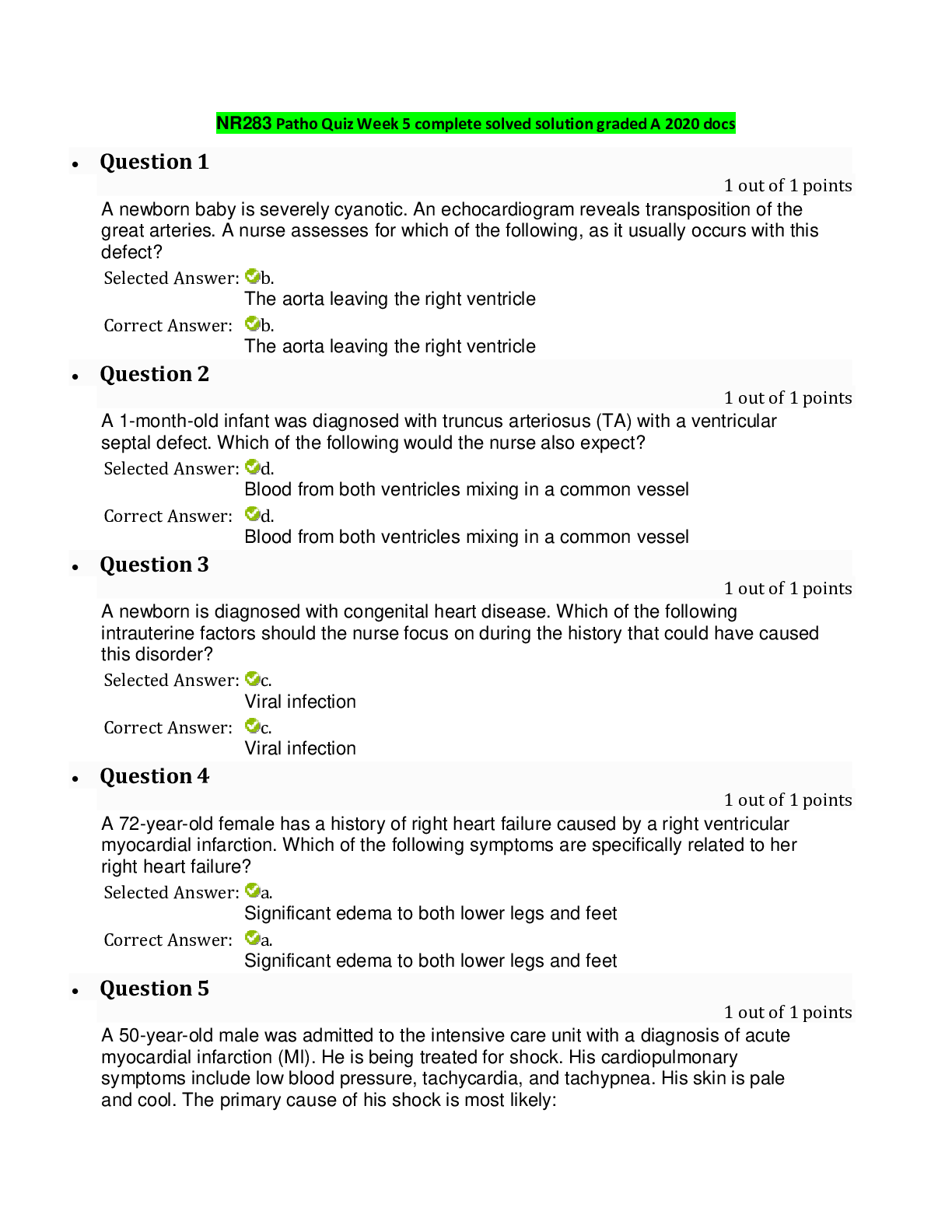
Reviews( 0 )
Document information
Connected school, study & course
About the document
Uploaded On
Oct 24, 2020
Number of pages
7
Written in
Additional information
This document has been written for:
Uploaded
Oct 24, 2020
Downloads
0
Views
37




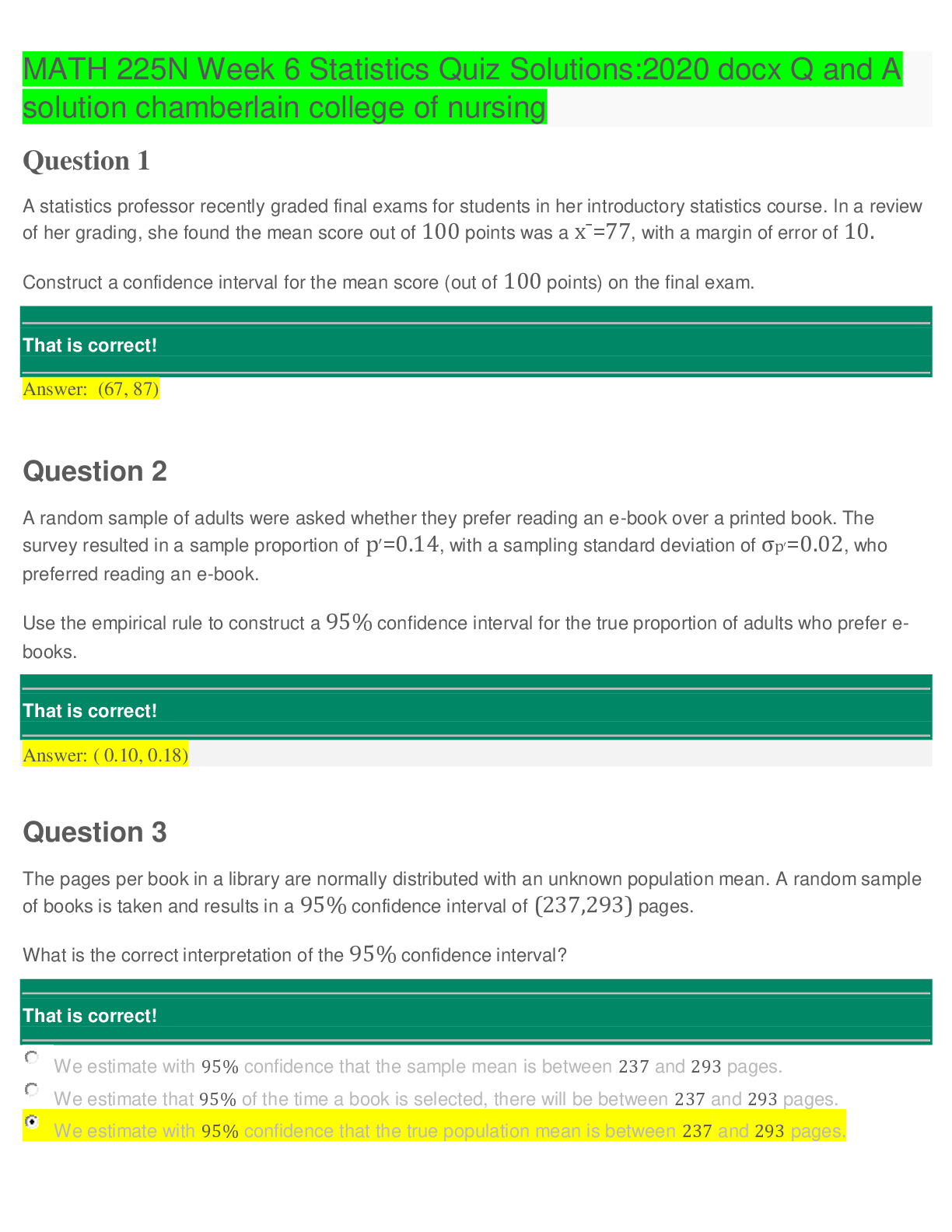

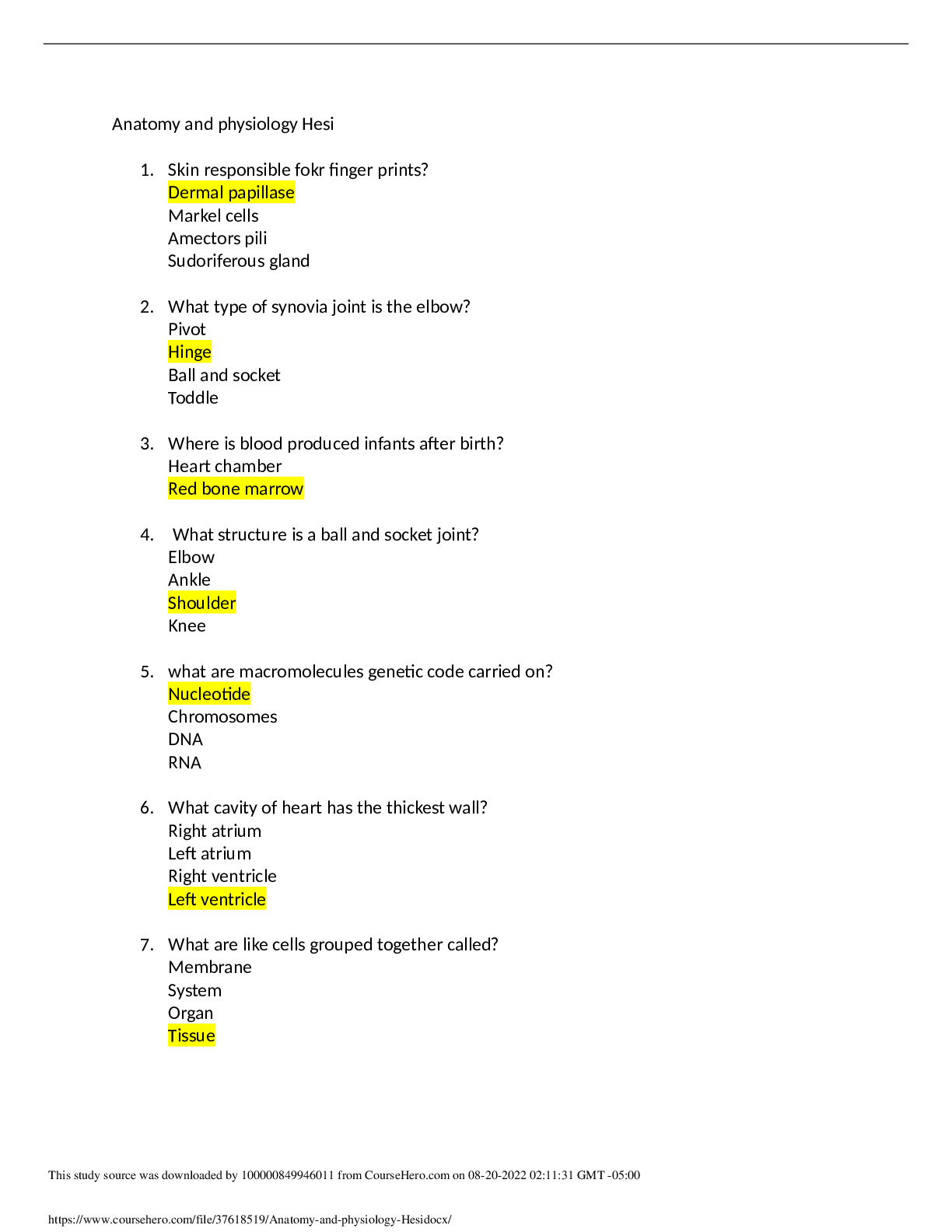

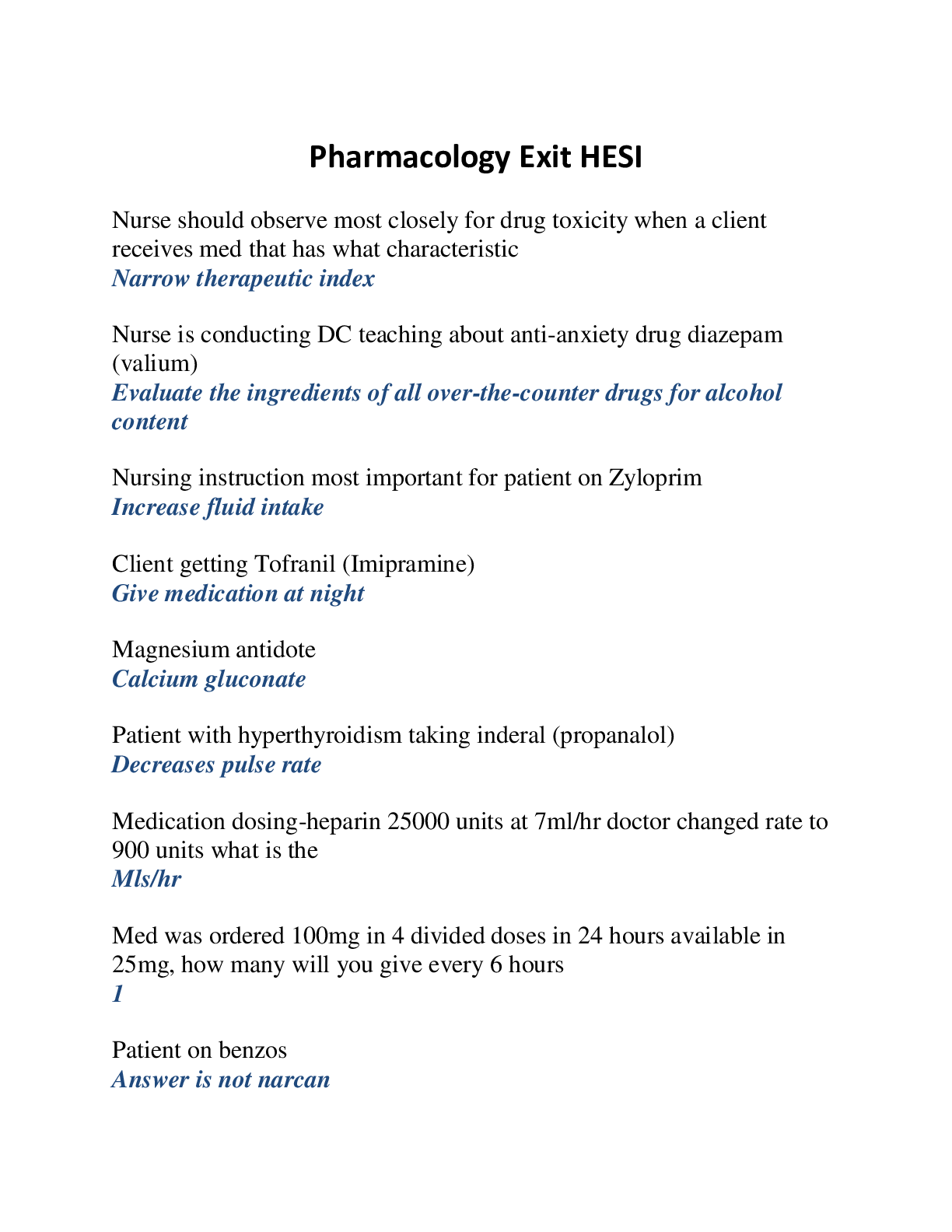
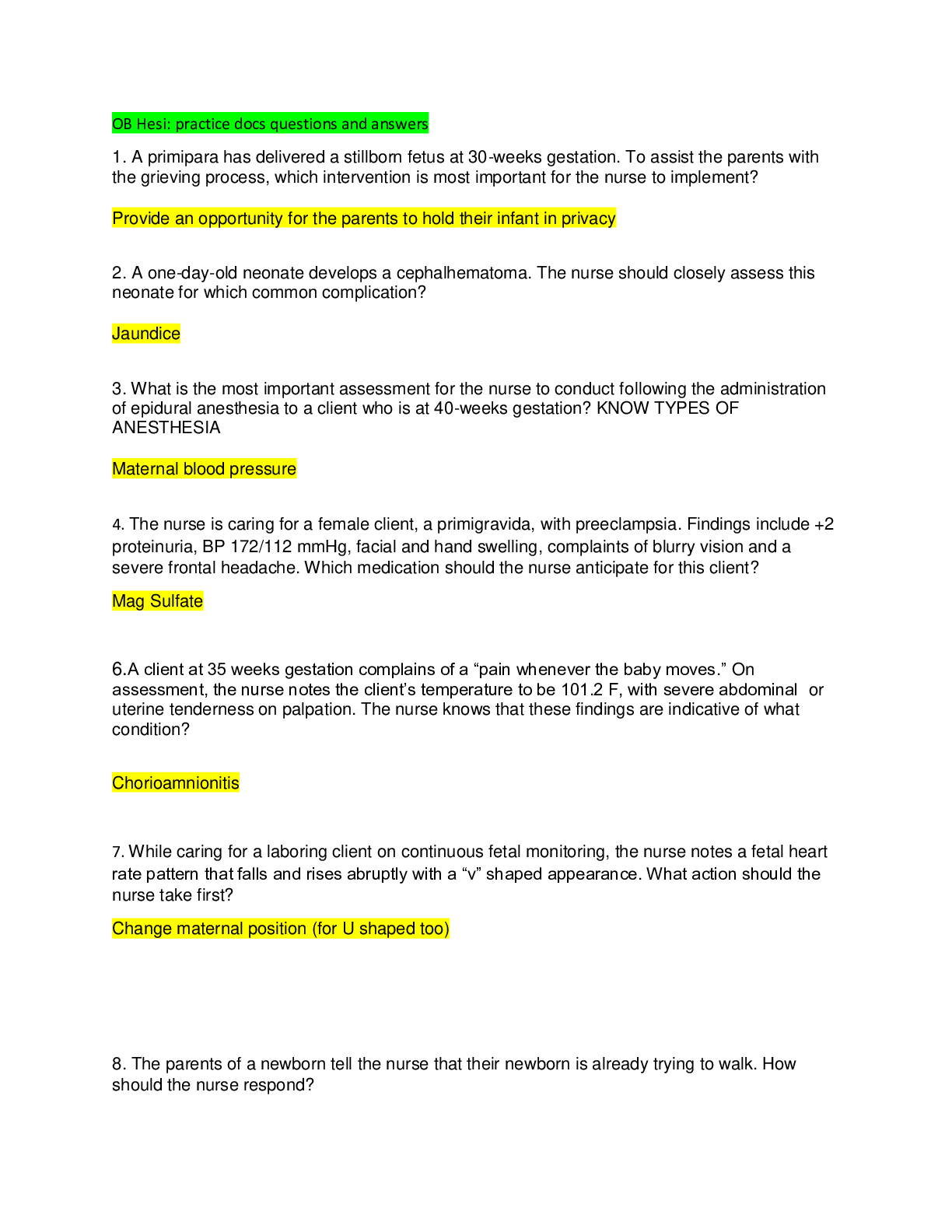
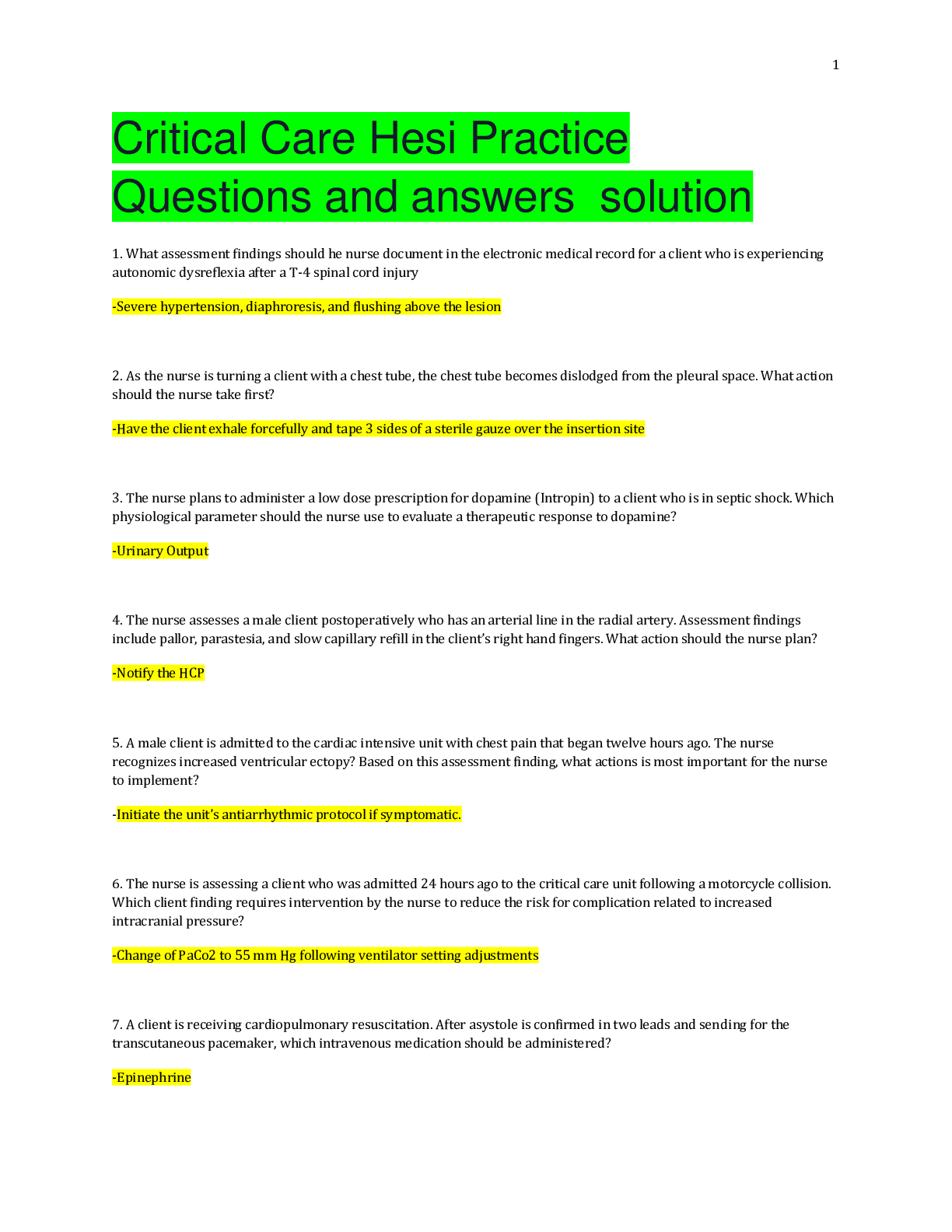
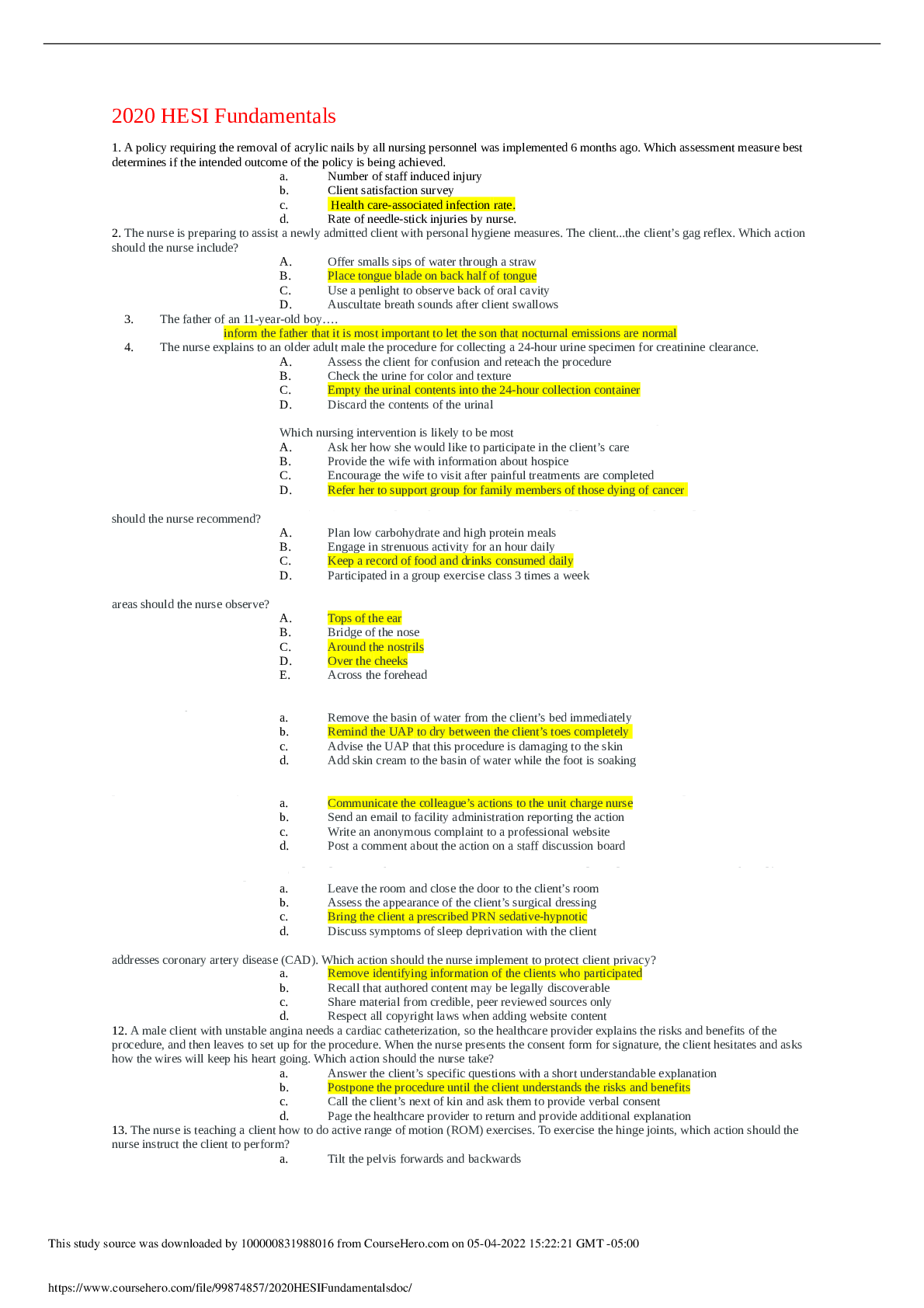

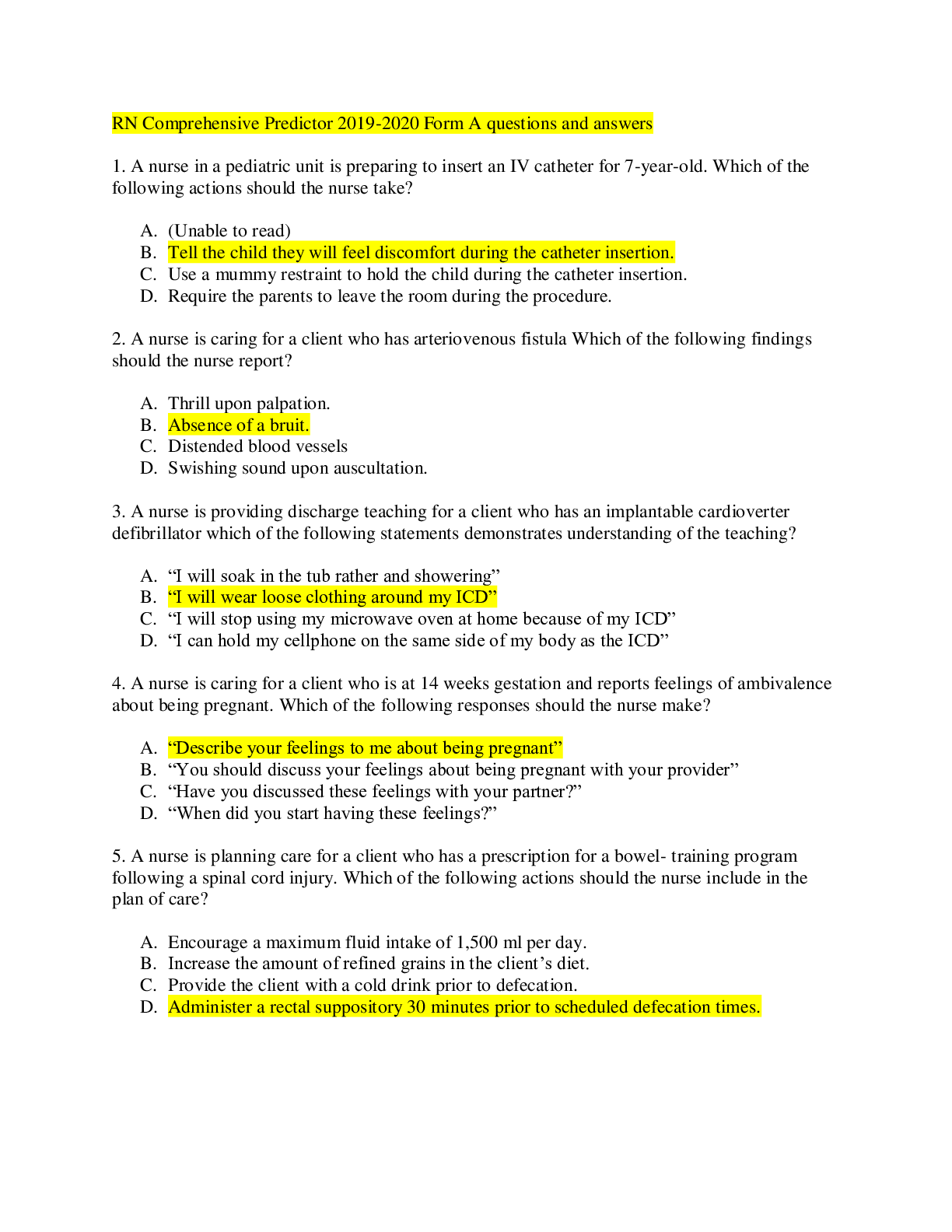

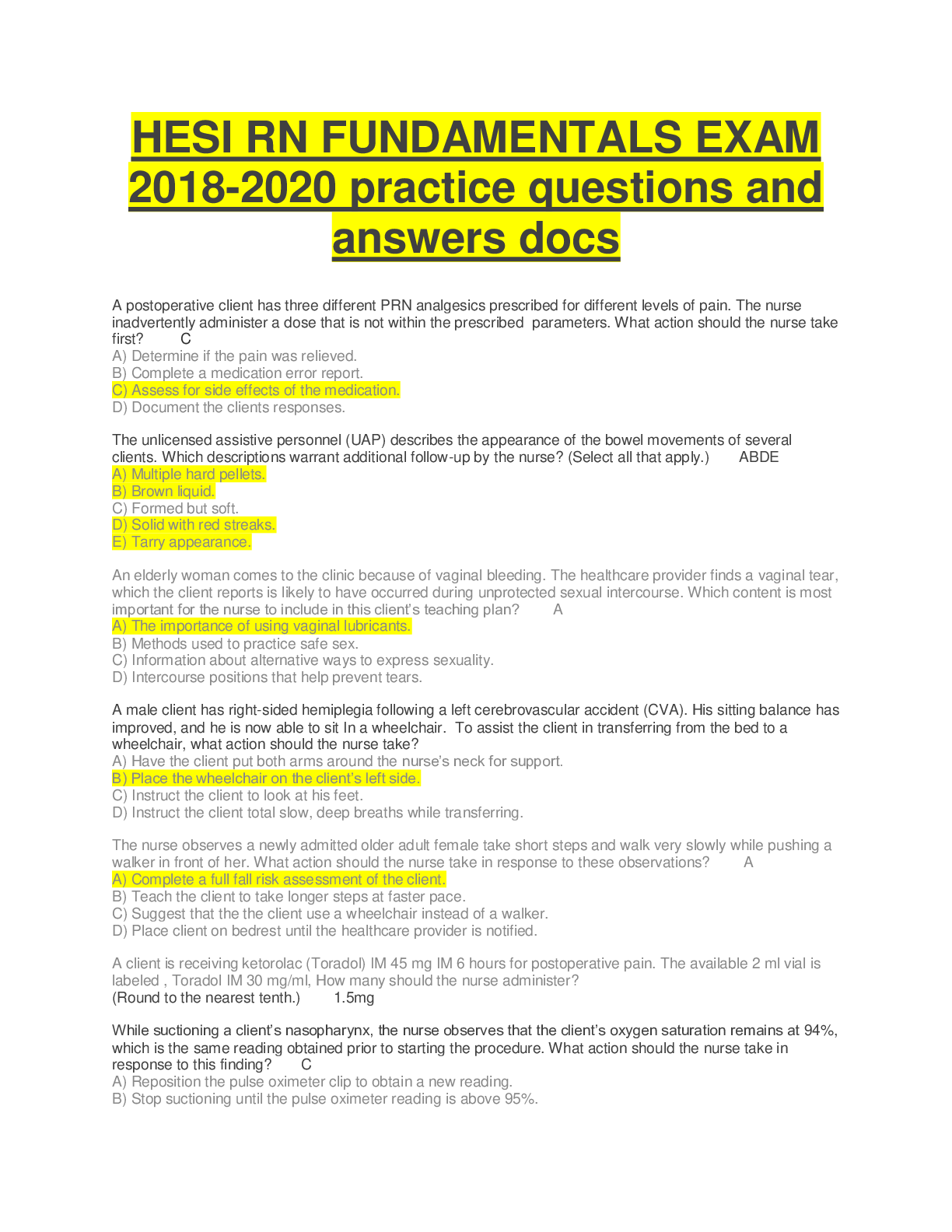
 2020 ans.png)

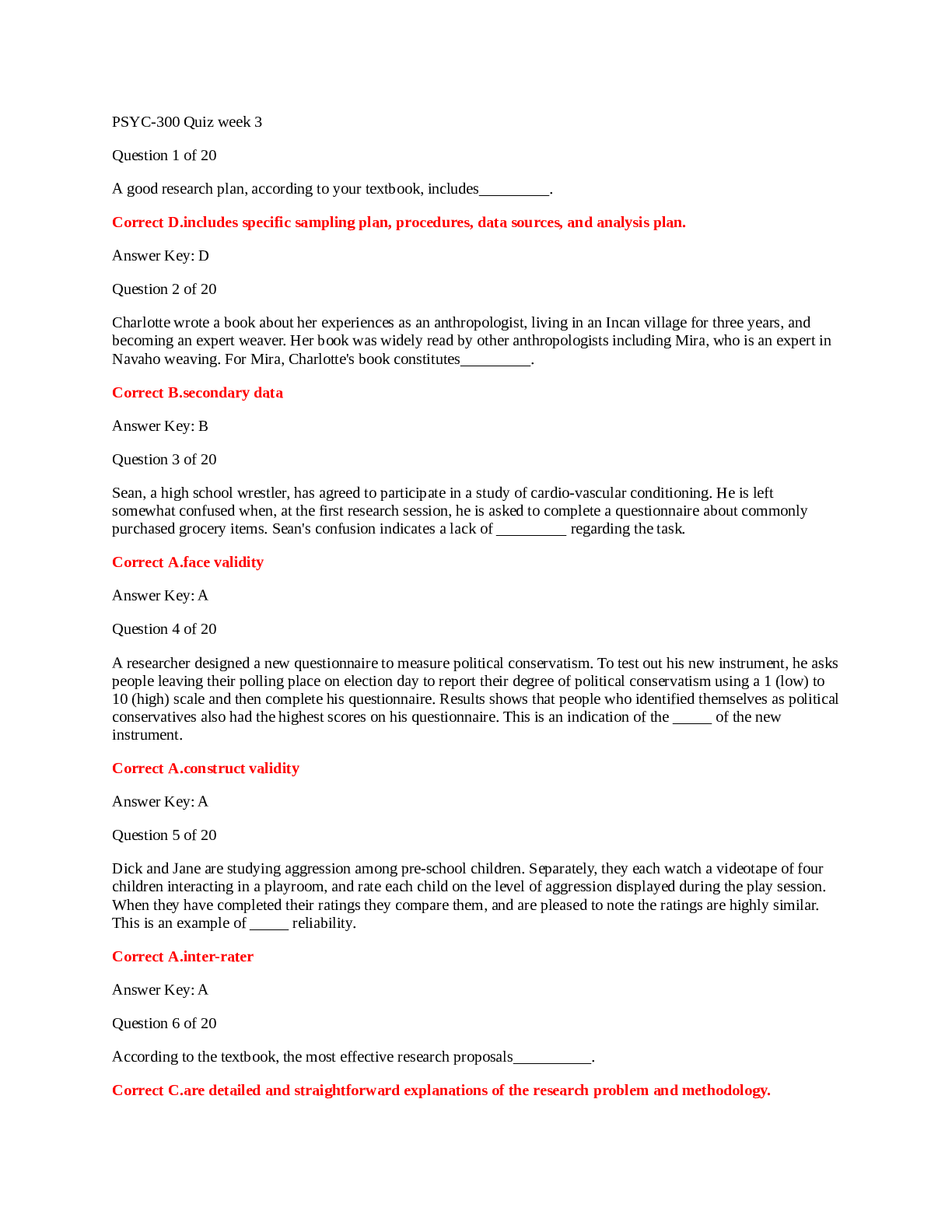
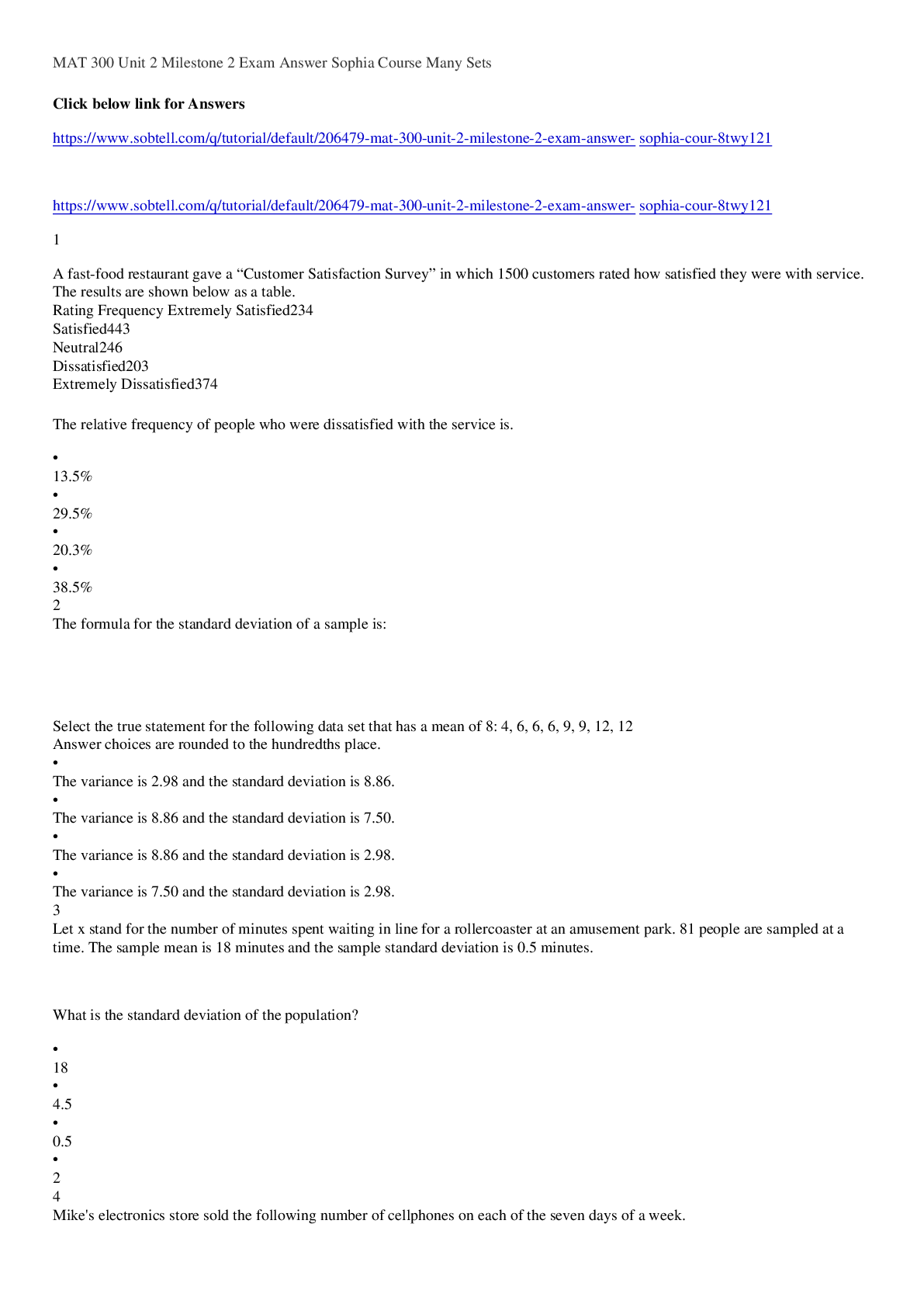


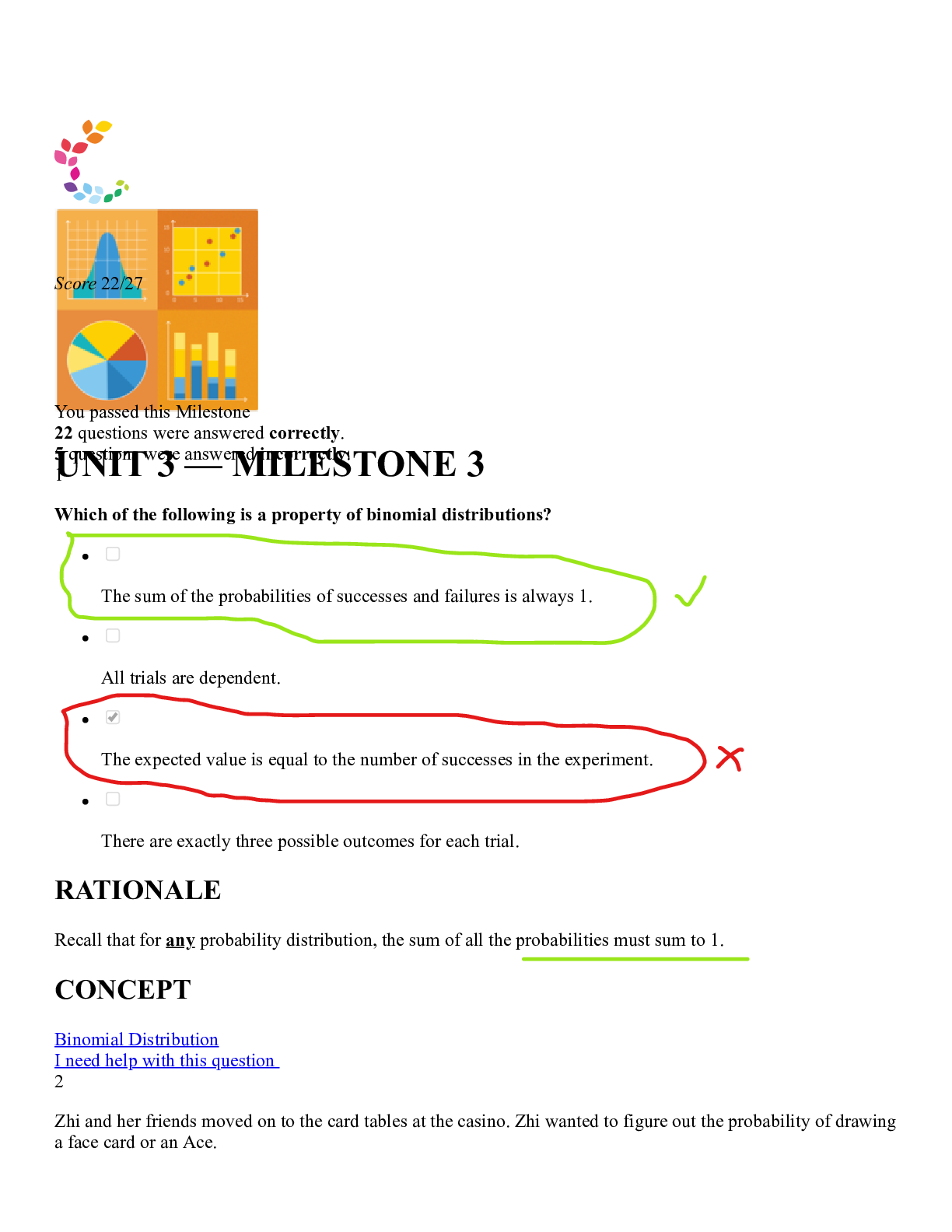

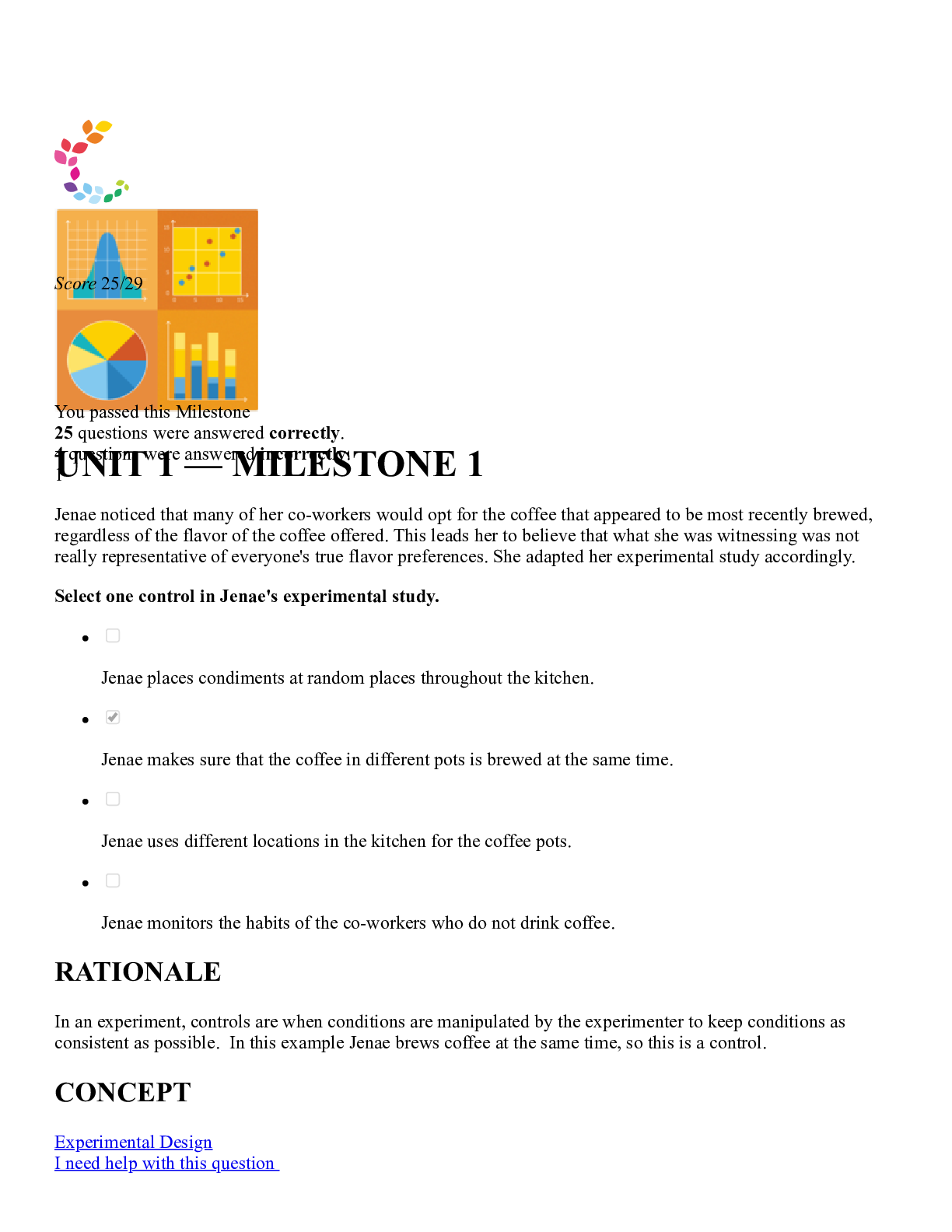
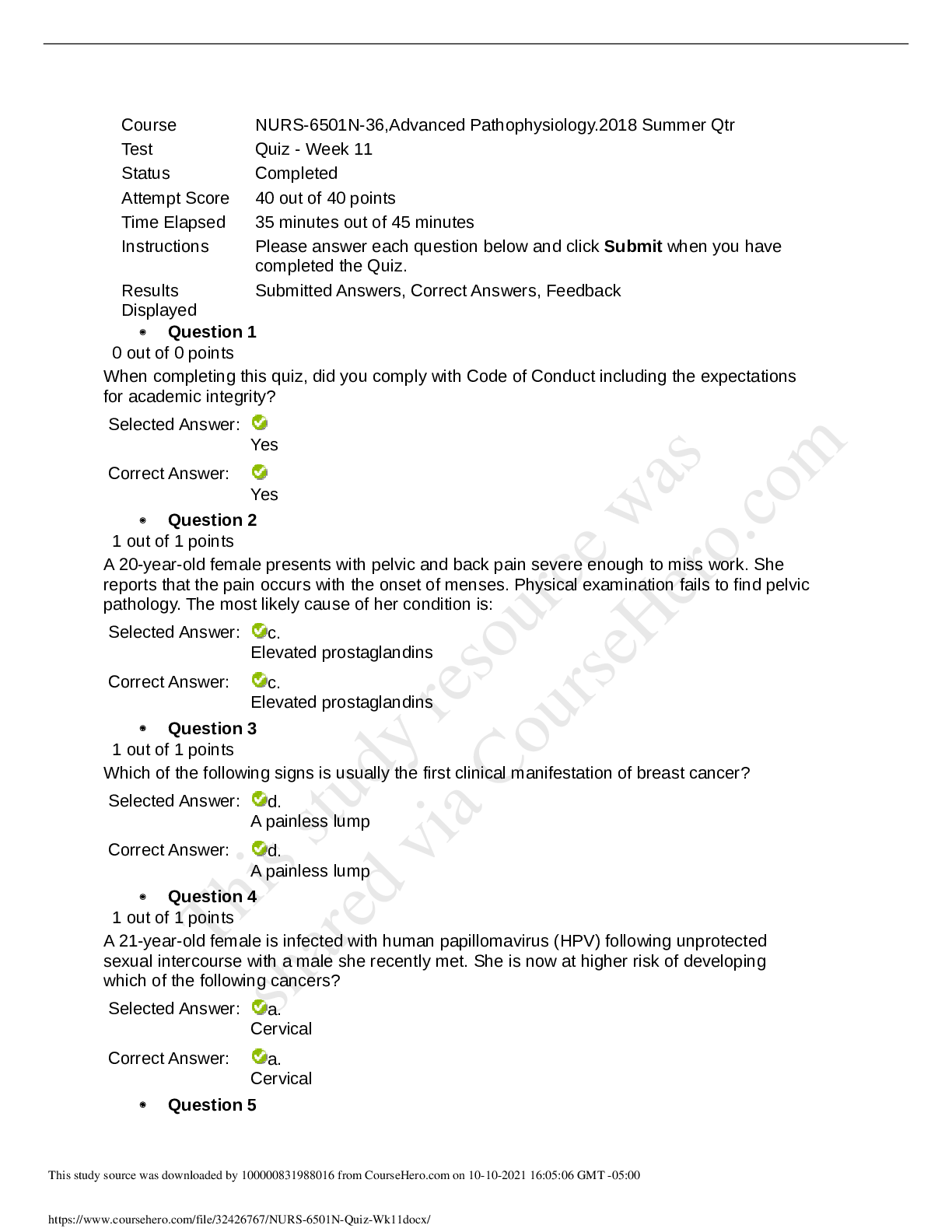
.png)
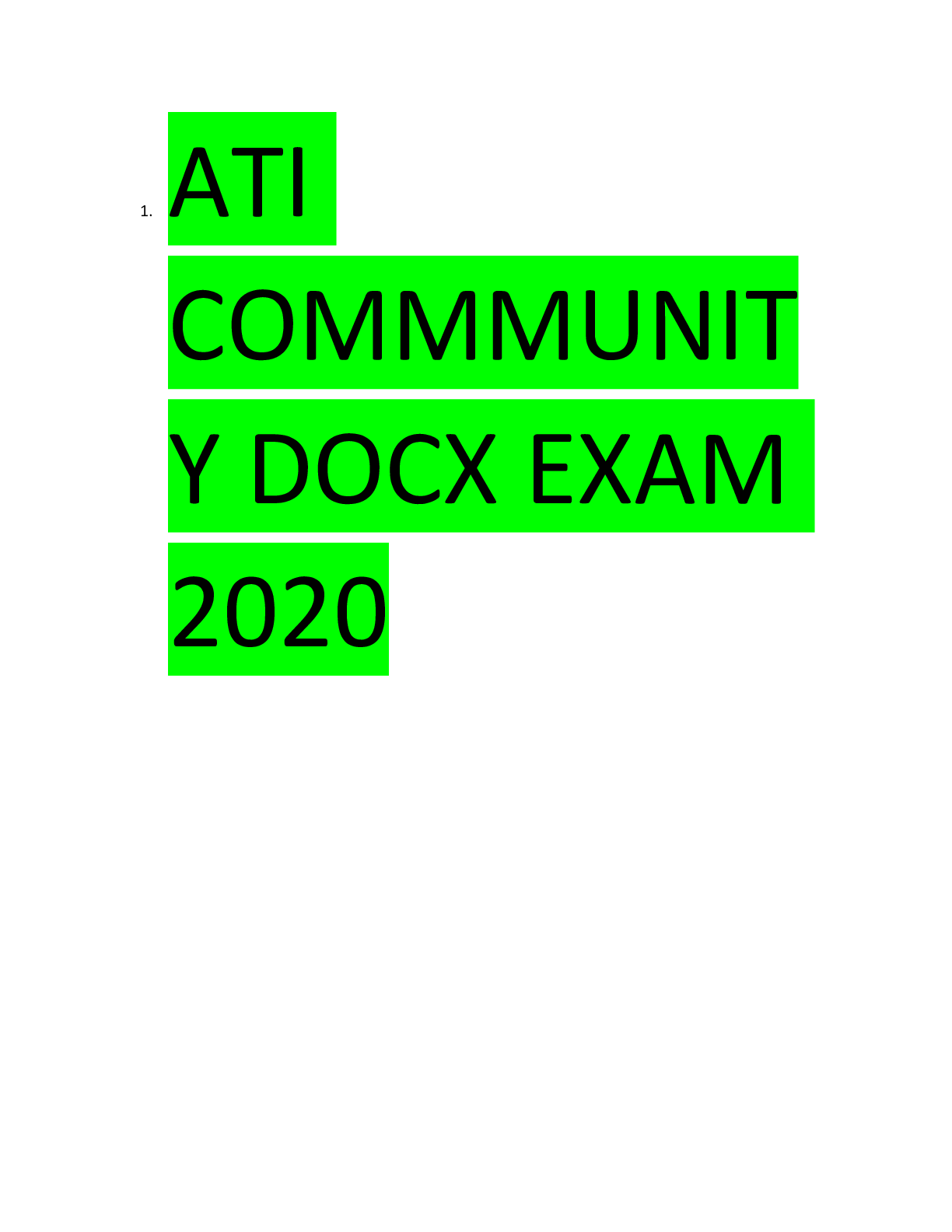
.png)
.png)
